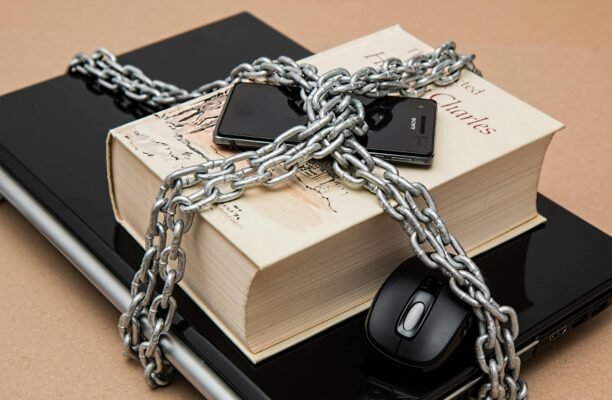|
The internet offers countless opportunities to connect, share, and express ourselves. Social media platforms and websites allow students to showcase their talents, share their opinions, and stay connected with friends and family. However, one of the most important lessons in internet safety is understanding the risks associated with sharing personal information online. While sharing can be enjoyable and engaging, it can also put students at risk if they are not careful.
The Dangers of Sharing Too Much
When students share personal details online, they run the risk of exposing themselves to various threats. Even seemingly harmless information can give hackers, scammers, or malicious individuals the clues they need to steal identities, gain access to private accounts, or manipulate students. Here are some of the main risks associated with oversharing on the internet:
- Identity Theft: Posting personal information like full names, birthdates, phone numbers, and addresses can be exploited by cybercriminals to steal your identity. Once identity theft occurs, it can lead to financial fraud, damage to credit scores, and a lengthy process to resolve the issue.
- Phishing Attacks: By sharing small snippets of personal information, such as the name of your school or favourite hobbies, students can make themselves vulnerable to phishing attacks. These are scams where criminals pose as legitimate entities (like schools or businesses) to trick individuals into giving up passwords, bank details, or other sensitive information.
- Online Predators: The internet can also be a breeding ground for online predators, especially on social media platforms and chat rooms. Sharing too much personal information, including your location or daily routines, can make students easy targets for individuals with harmful intentions.
- Cyberbullying: Oversharing can make students more susceptible to cyberbullying. For instance, posting emotional content, personal struggles, or revealing personal conflicts can invite criticism or harassment from others. Once these posts are online, they can be difficult to remove, leaving lasting emotional scars.
- Loss of Privacy: Once something is shared online, it can be difficult to control who sees it. Even if you delete a post, someone may have already saved or shared it, meaning your private life is now public. This loss of privacy can have long-term consequences, affecting both personal relationships and academic or professional opportunities in the future.
What Not to Share Online
It’s essential for students to think before they post, tweet, or share content online. Here are some types of information that should be kept private:
- Full Names and Personal Details: Avoid posting your full name, address, phone number, and any other identifying information. Even posting your school’s name can give cybercriminals clues about where you are.
- Location and Routines: Posting real-time updates about where you are or your plans for the day can be dangerous. This information can help someone track your movements, potentially making you vulnerable to harm. Similarly, avoid posting about your location in real-time, particularly when you’re at home or at school.
- Financial Information: Never share details like credit card numbers, bank accounts, or any other financial information. This information can easily be exploited by scammers or thieves.
- Sensitive Photos or Videos: Images or videos that are personal or sensitive should never be shared online. Even innocuous photos can be altered or shared out of context, which can lead to embarrassment or unwanted attention.
- Passwords: This one is obvious but worth repeating. Never share your passwords online, even with friends or trusted individuals. Cybercriminals often use social engineering tactics to trick people into revealing sensitive information.
How to Protect Your Privacy Online
To protect privacy, students should follow these steps:
- Think Before You Share: Always ask yourself whether the information you are about to post could compromise your safety or privacy. Would you be comfortable with strangers seeing it? If not, reconsider sharing it.
- Adjust Privacy Settings: Social media platforms and websites often allow users to control who can see their posts. Ensure that your profiles are private, limiting access to only trusted friends or family. Review privacy settings regularly, as these platforms may update their policies.
- Use Secure Accounts: Make sure that online accounts, especially social media or messaging apps, have strong passwords and enable two-factor authentication for extra security. This adds another layer of protection in case your account is targeted.
- Educate About Digital Footprints: Teach students that everything shared online contributes to their digital footprint. Once something is online, it can be very hard to erase completely. This is why it’s essential to think carefully before posting anything that could impact their reputation or safety.
The Role of Parents and Teachers
While students should be proactive about protecting their privacy, parents and teachers also play a crucial role in guiding them. Parents can set clear boundaries regarding what is acceptable to share online, monitor social media use, and provide ongoing education about digital safety. Teachers can incorporate lessons on digital literacy and online safety into their curriculum, helping students understand the implications of their online actions.
Students must be aware of the risks associated with oversharing personal information online. By being cautious about what they post, adjusting privacy settings, and thinking carefully before sharing, they can protect their privacy and maintain a safe digital presence. Online safety is a shared responsibility, and with the right education and awareness, students can safely navigate the internet without compromising their personal information.
|





Leave your comment